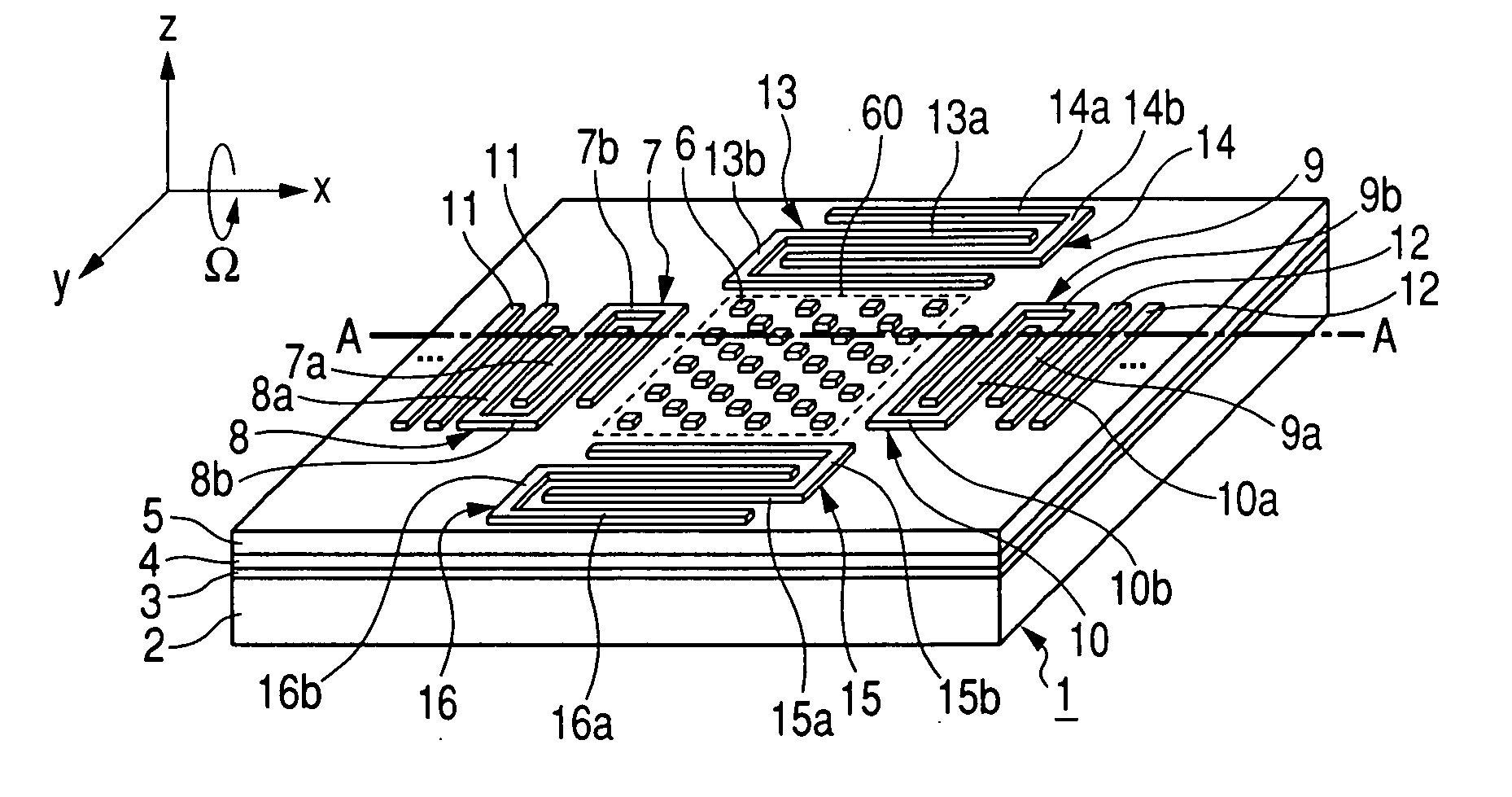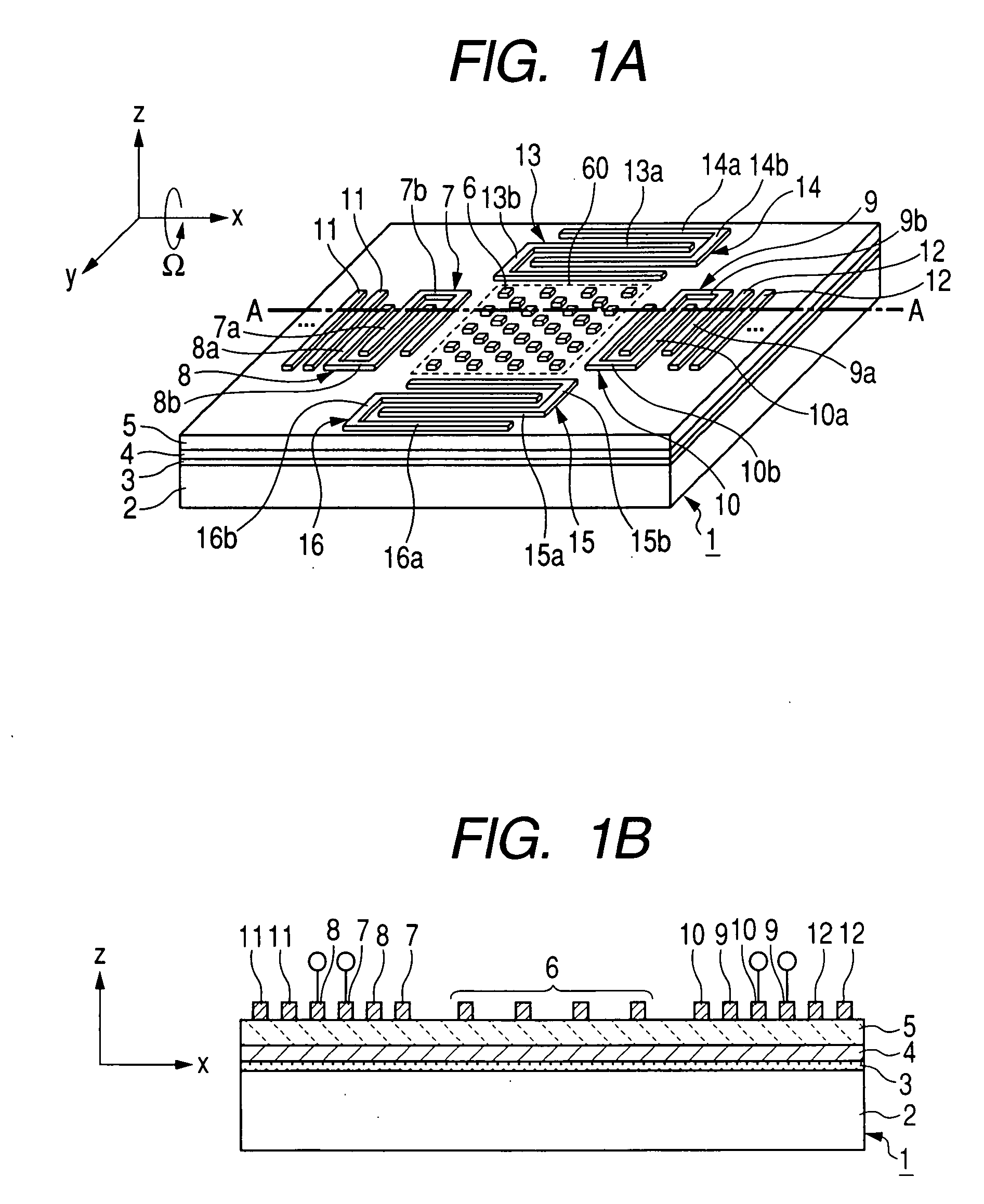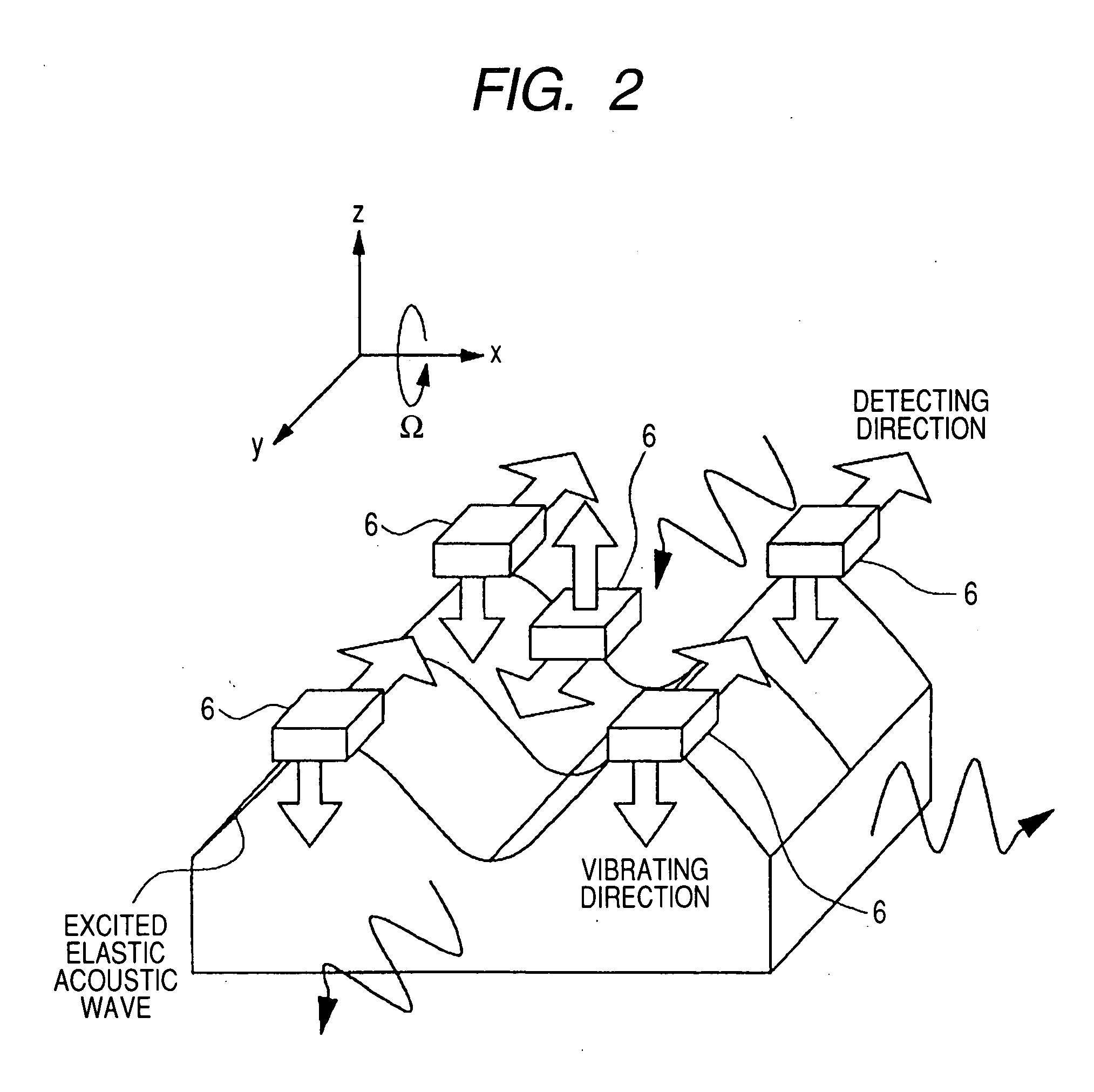Angular rate sensor
a technology of angular rate sensor and gyroscope, which is applied in the direction of acceleration measurement using interia force, instruments, devices using electric/magnetic means, etc. it can solve the problems of electric symmetry broken, electric charge generated, and inherent performance limitation of angular rate sensors of this type, so as to achieve high reliability, high sensitivity, and high stability.
- Summary
- Abstract
- Description
- Claims
- Application Information
AI Technical Summary
Benefits of technology
Problems solved by technology
Method used
Image
Examples
first embodiment
Modification of First Embodiment
[0196]FIG. 6 shows a cross-sectional view of the angular rate sensor 1 according to the modification of the first embodiment taken along line A-A in FIG. 1A.
[0197] In the first embodiment described above in which the perturbation masses 6, the driving electrodes 7-10, the reflectors 11, 12, and the detecting electrodes 13-16 are disposed directly on the upper surface of the piezoelectric film 5, if necessary, an thin insulator film 20 is formed and inserted between the upper surface of the piezoelectric film 5 and the perturbation masses 6, the driving electrodes 7-10, the reflectors 11, 12, and the detecting electrodes 13-16. In this configuration, the perturbation masses 6, the driving electrodes 7-10, the reflectors 11, 12, and the detecting electrodes 13-16 are disposed on the thin insulator film 20. It is especially preferable in a case where the piezoelectric film 5 is made of AlN that the thin insulator film 20 is formed on the supper surface ...
second embodiment
Modification of Second Embodiment
[0215] In the second embodiment described above in which the second electrode 30, the driving electrodes 7-10, the reflectors 11, 12, and the detecting electrodes 13-16 are disposed directly on the upper surface of the piezoelectric film 5.
[0216] As shown in FIG. 11, if necessary, a thin insulator film 20 is formed and inserted between the upper surface of the piezoelectric film 5. Consequently, the second electrode 30, the driving electrodes 7-10, the reflectors 11, 12, and the detecting electrodes 13-16 are formed on the thin insulator film 20. In this configuration, the second electrode 30, the driving electrodes 7-10, the reflectors 11, 12, and the detecting electrodes 13-16 are disposed on the thin insulator film 20. In this configuration, it is possible to prevent etching the piezoelectric film 5 while the thin film of metal or conductive metallic alloy is patterned to form the second electrode 30, the perturbation masses 6, and the driving el...
third embodiment
Modification of Third Embodiment
[0233] In the third embodiment described above in which the second electrode 30, the driving electrodes 7-10, the reflectors 11, 12, and the detecting electrodes 13-16 are disposed directly on the upper surface of the piezoelectric film 5.
[0234] As shown in FIG. 16, if necessary, a thin insulator film 20 is formed and inserted between the upper surface of the piezoelectric film 5. Consequently, the second electrode 30, the driving electrodes 7-10, the reflectors 11, 12, and the detecting electrodes 13-16 are formed on the thin insulator film 20. In this configuration, the second electrode 30, the driving electrodes 7-10, the reflectors11, 12, and the detecting electrodes 13-16 are disposed on the thin insulator film 20. In this configuration, the contact holes 5a penetrate the thin insulator film 20 so as to electrically connect the first electrode 4 to the second electrode 30.
PUM
 Login to View More
Login to View More Abstract
Description
Claims
Application Information
 Login to View More
Login to View More - R&D
- Intellectual Property
- Life Sciences
- Materials
- Tech Scout
- Unparalleled Data Quality
- Higher Quality Content
- 60% Fewer Hallucinations
Browse by: Latest US Patents, China's latest patents, Technical Efficacy Thesaurus, Application Domain, Technology Topic, Popular Technical Reports.
© 2025 PatSnap. All rights reserved.Legal|Privacy policy|Modern Slavery Act Transparency Statement|Sitemap|About US| Contact US: help@patsnap.com



